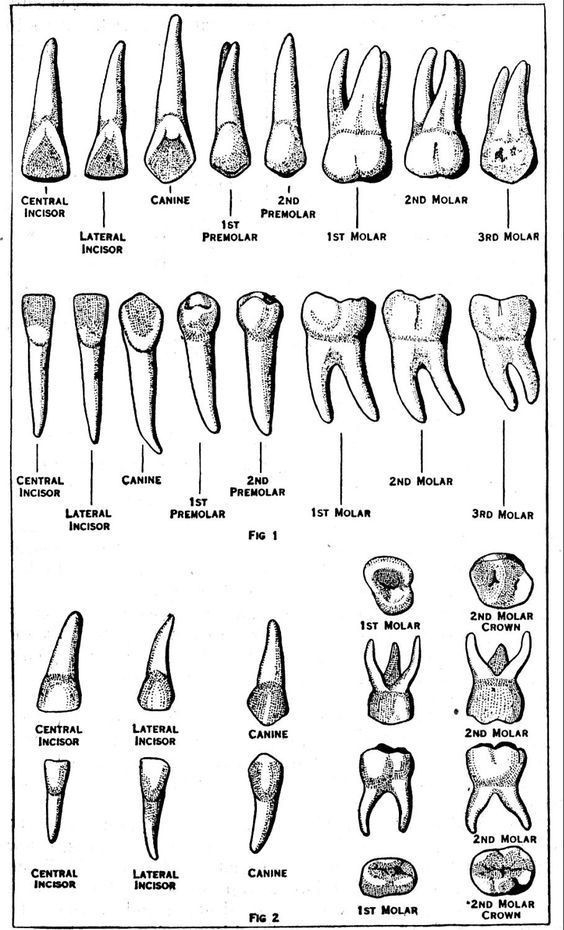Introduction
Dental formula is used to understand the number and arrangements of teeth in humans and animals. Dental formula describes the relationship of teeth within the jaws of animal teeth and human teeth. It provides information about the number and size of teeth as well as the type of teeth. Teeth are the most important element in our mouths. They help us to eat, churn and chew the food. There are two sets of teeth in mammals – deciduous and permanent. Deciduous teeth are also known as milk teeth or baby teeth. Incisors, Canines , Premolars and Molar are four types of teeth present in our mouth.
Dentition
Dentition is used to describe the development of teeth and their arrangement in the mouth. The development of teeth depends on the characteristics of teeth as their kind, arrangement, and number of teeth in a species. The dentition of animals whose teeth succession is known as diphyodont, whereas in animals with only one set of teeth throughout life is known as monophyodont.
Each tooth in our mouth consists of a crown, a root and a cervical part. Enamel covers the crown. Apical foramen and the root canal help the root of the tooth, blood vessels and nerves to access the pulp cavity. Parodontium refers to the collection of cementum , desmodium, alveolar bone and gingival together.
Different Types of Teeth
There are four types of teeth namely Incisors, Canines, Premolars and Molars. These four types of teeth are present on the jawbones in the mouth, extending into the buccal cavity. The four types of teeth have different functions like cutting, crushing, shredding and tearing the food.
Incisors (I)
These are in the front row of the mouth. They help in cutting and slicing the food into the pieces to fit in the mouth. They are present in both of the jaws in mammals.
Canines (C)
These are most commonly known as dog teeth. In the case of Carnivores, these teeth help in holding and tearing apart food as they have pointed structures and in the case of herbivores, these teeth help in the breakdown and split hard surfaces of certain fruits such as nuts. In human beings, these provide a benefit of aiding in articulation.
Premolars (P)
These are the transition teeth between canines and molars. They provide smooth surfaces that help in occlusion (the process of cutting, crushing, grinding the food into the rapid digestible form).
Molars (M)
These are large teeth present in mammals. They help in grinding the food. In mammals, there are 12 molars present in a set of three in both the lower and upper jaw.
Dental Formula
The dental formula describes and expresses the total number of teeth in man and animal as per the arrangements. The dental formula is expressed with letters and figures. The letters used in this formula are on the basis of the types of teeth Incisors, Canines, Premolars and Molars.
Dental Formula
(number of each type of teeth upper jaw ) / (number of teeth on one side of the lower jaw)
Dental formula = (2 Incisors 1 Canines 2 Premolars 3 Molars) /(2 Incisors 1 Canines 2 Premolars 3 Molars)
Human teeth have two dental formulas:
The dental formula represents the arrangement of teeth in each half of the upper and the lower jaw. The entire formula is multiplied by two to represent the total number of teeth.
The dental formula for milk teeth in humans is:
The primary dentition (20 teeth)
I2/2 C1/1 M2/2 = 10 × 2 = 20 teeth
Each half of the upper jaw and the lower jaw has 2 incisors, 1 canine, and 2 molars. Premolars are absent in milk teeth hence the zero.
The permanent dentition (32 teeth):
I2/2C1/1 P2/2 M 3/3 = 16 × 2 = 32 teeth
Each half of the upper jaw and the lower jaw has 2 incisors, 1 canine, 2 premolars, and 3 molars. An adult human has 32 permanent teeth.
Here, I- Incisors , C- Canines , P- Premolars , M- Molar.
Key Difference – Herbivores vs Carnivores Teeth
The key difference between herbivores and carnivores teeth is that herbivores teeth are used for cutting, gnawing, and biting while carnivores teeth are sharper and more suited to catching, killing, and tearing the prey. Based on the food habits there are three types of animals; carnivores, herbivores and omnivores. Animals that rely entirely on the flesh of other animals are called carnivores and animals that feed entirely on vegetation/ plant matters are called herbivores. Omnivores are the animals that feed on both meat and vegetation. Because of the various dietary patterns and the nutrient amount in food, the structure, the number and the location of teeth among these three groups vary widely. In this article, the difference between herbivores and carnivores teeth will be highlighted.
Herbivores Teeth
The incisors of herbivores are sharp and are used mainly to cut, gnaw and bite. Gnawing herbivores have long chisel-like incisors located in front of the skull and used for gnawing and scraping. They do not have canines. A horny pad in the upper jaw completely replaces the canines and incisors in ruminants. Moreover, their incisors and canines are similar and act as blades to cut and gather grass. Molars and premolars of herbivores have flat grinding surfaces, and they grow continuously throughout their lifetime.
Carnivores Teeth
Carnivore teeth are extremely adapted to the dietary habits of carnivores. Their upper premolar 4 and lower molar 1 are carnassial teeth and used to cut the meat away from the bone. The long, pointed canines are used to catch, kill their prey, and tear the flesh of prey. Their premolars and molars are flattened with uneven edges and are used to shear the flesh of prey into smaller pieces. Their incisors are pointed teeth and are used to catch prey.








